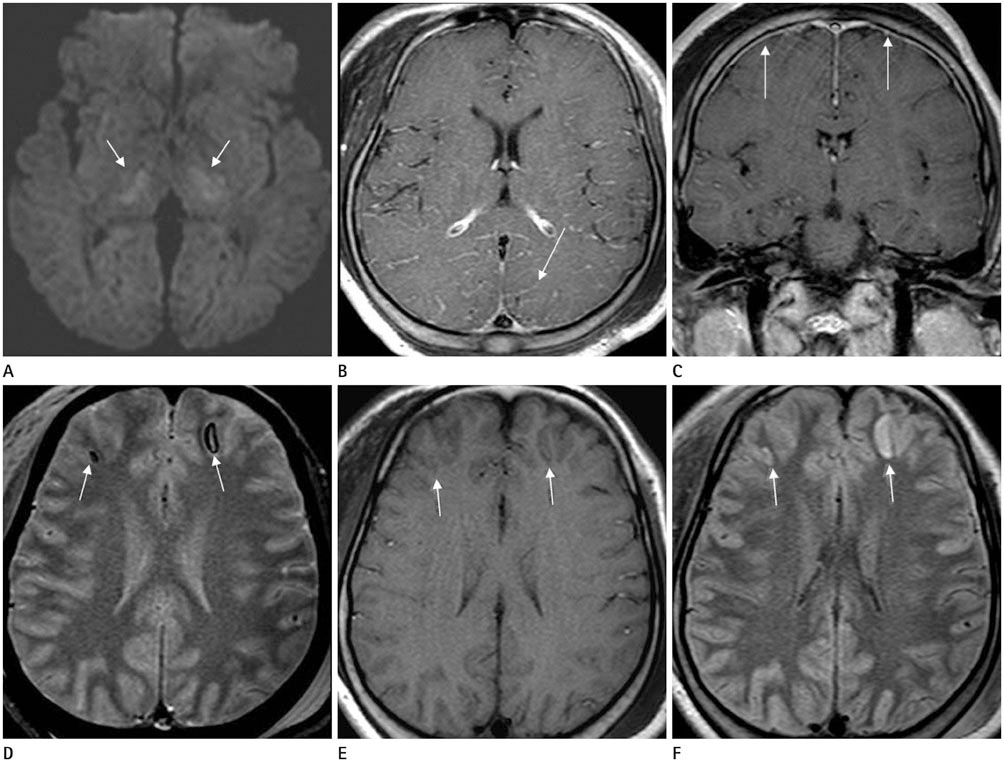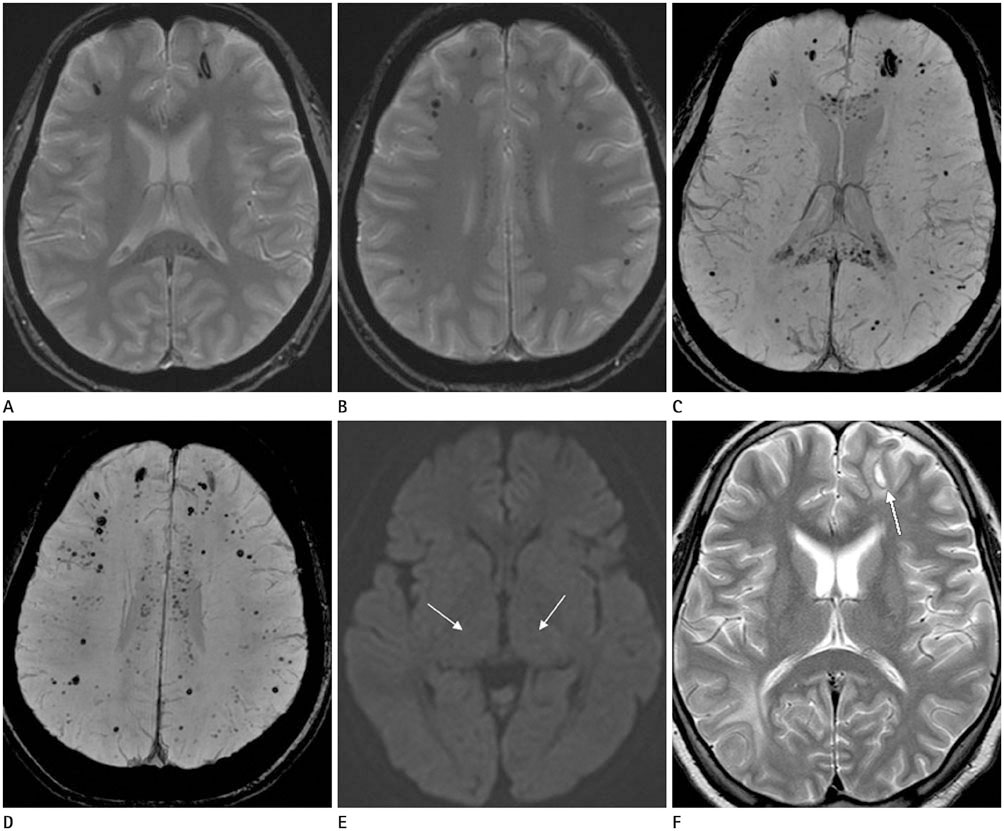J Korean Soc Radiol.
2016 Feb;74(2):142-146. 10.3348/jksr.2016.74.2.142.
Numerous Cerebral Hemorrhages in a Patient with Influenza-Associated Encephalitis: A Case Report
- Affiliations
-
- 1Department of Radiology, Myongji Hospital, Goyang, Korea. prinsy1@naver.com
- KMID: 2152608
- DOI: http://doi.org/10.3348/jksr.2016.74.2.142
Abstract
- Influenza-associated encephalitis (IAE) is a complication of a common disease that is rare even during an epidemic. Awareness of magnetic resonance imaging features of IAE is important in treatment planning and prognosis estimation. Several reports have described necrotizing encephalopathy in children with influenza. However, few reports have described multifocal hemorrhages in both cerebral hemispheres in adults with concomitant infection with influenza A and B. Here, we describe a case of influenza A- and B-associated encephalitis accompanied by numerous cerebral hemorrhages.
MeSH Terms
Figure
Reference
-
1. Yoshikawa H, Yamazaki S, Watanabe T, Abe T. Study of influenza-associated encephalitis/encephalopathy in children during the 1997 to 2001 influenza seasons. J Child Neurol. 2001; 16:885–890.2. Protheroe SM, Mellor DH. Imaging in influenza A encephalitis. Arch Dis Child. 1991; 66:702–705.3. Fugate JE, Lam EM, Rabinstein AA, Wijdicks EF. Acute hemorrhagic leukoencephalitis and hypoxic brain injury associated with H1N1 influenza. Arch Neurol. 2010; 67:756–758.4. Simon M, Hernu R, Cour M, Casalegno JS, Lina B, Argaud L. Fatal influenza A(H1N1)pdm09 encephalopathy in immunocompetent man. Emerg Infect Dis. 2013; 19:1005–1007.5. Joosten A, Moya B, Nunes J, Germano N, Alcântara J, Bento L. H1N1 influenza virus-associated encephalitis: a case report. Med Intensiva. 2012; 36:520–522.6. Kimura S, Ohtuki N, Nezu A, Tanaka M, Takeshita S. Clinical and radiological variability of influenza-related encephalopathy or encephalitis. Acta Paediatr Jpn. 1998; 40:264–270.7. Steininger C, Popow-Kraupp T, Laferl H, Seiser A, Gödl I, Djamshidian S, et al. Acute encephalopathy associated with influenza A virus infection. Clin Infect Dis. 2003; 36:567–574.8. Ito Y, Ichiyama T, Kimura H, Shibata M, Ishiwada N, Kuroki H, et al. Detection of influenza virus RNA by reverse transcription-PCR and proinflammatory cytokines in influenza-virus-associated encephalopathy. J Med Virol. 1999; 58:420–425.9. Lopes da Silva R. Viral-associated thrombotic microangiopathies. Hematol Oncol Stem Cell Ther. 2011; 4:51–59.10. Kosugi N, Tsurutani Y, Isonishi A, Hori Y, Matsumoto M, Fujimura Y. Influenza A infection triggers thrombotic thrombocytopenic purpura by producing the anti-ADAMTS13 IgG inhibitor. Intern Med. 2010; 49:689–693.
- Full Text Links
- Actions
-
Cited
- CITED
-
- Close
- Share
- Similar articles
-
- Encephalitis by Co-infection with A/H1N1 Influenza and Herpes Simplex Virus in an Adult Patient
- Herpes Meningoencephalitis Complicated by Cerebral Hematomas During Acyclovir Therapy
- Novel Swine-Origin Influenza A (H1N1) Viral Encephalitis
- Encephalitis Induced by 2009 H1N1 Influenza A
- Status Epilepticus in Influenza A (H1N1) Viral Encephalitis



